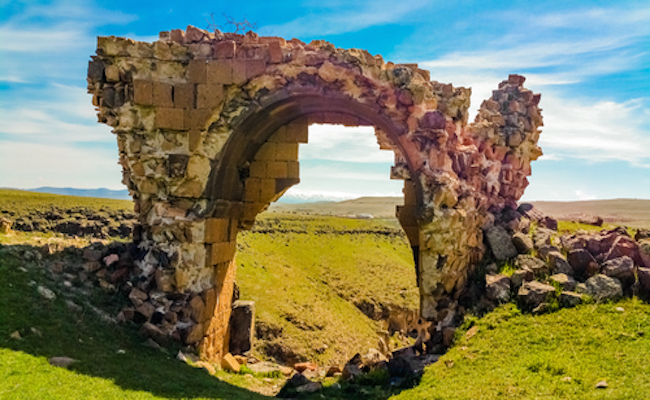
The United Nations Educational, Scientific, and Cultural Organization (a.k.a. UNESCO) seeks to establish international peace on the basis of humanity’s moral and intellectual solidarity. And boy do we need it! Included in UNESCO is the World Heritage Centre, which adheres to the principle that “our cultural and natural heritage are both irreplaceable sources of life and inspiration.” No arguments so far.
For the past 40 years, UNESCO’s World Heritage Centre has compiled a list — recognizing the most culturally significant places in the world. They then proceed to protect and conserve each site for future generations. Today, there are over 1,000 sites from around the world on the list. Some you may know — the Great Barrier Reef, Yellowstone National Park, and the Leaning Tower of Pisa — and guess what? Now, there are five more for you to visit.
Let’s take a visual tour of the latest additions to UNESCO’s World Heritage Site List.
Stećci – Medieval Tombstones Graveyards (Bosnia and Herzegovina, Croatia, Montenegro, Serbia)
https://www.instagram.com/p/BH5Lj3eAUvq/
These rows of ancient limestone tombs date back to the 12th-16th centuries CE and can be found in a collection of places throughout four different countries. The tombstones have decorative motifs to celebrate life, joy, and strength unlike the fake Donald Trump tombstone found in Central Park which had no motifs and decidedly less to celebrate.
https://www.instagram.com/p/BFZnOzhlmsz/?taken-by=anna_n_zzz
https://www.instagram.com/p/BH6n9wxDXDc/?taken-by=taranationalpark
Archaeological Site of Philippi (Greece)
https://www.instagram.com/p/BFguwnfHlLp/?taken-by=lucasthepowell
The city of Philippi was founded in 356 BC by King Phillip II and developed in the shadow of the Roman Empire, following the battle of Philippi in 42 BCE. Ruins of a theater and temple remain today as a testament to the early establishment of Christianity and legacy of the apostle Paul in 49-50 CE.
https://www.instagram.com/p/BA7Ix3zQK0J/?taken-by=stkalachev
Antequera Dolmens Site (Spain)
https://www.instagram.com/p/BHerfLFBqof/?taken-by=cesarqm4
Located in the southern Spanish region of Andalusia, the Antequera Dolmens Site is comprised of three tombs surrounded by massive stone chambers with linteled roofs. In other words, very impressive architecture, worth preserving 12,000 years later.
https://www.instagram.com/p/9vkNDwMqip/?taken-by=ajkelly68
https://www.instagram.com/p/BH_z4Q6hK0D/
Archaeological Site of Ani (Turkey)
In the midst of political unrest in Turkey, it becomes increasingly apparent how valuable sites like the Archaeological Site of Ani are. The city flourished in the 10th and 11th centuries CE and met its decline after the Mongol invasion and an earthquake in 1319.
https://www.instagram.com/p/BC4-E2Ml5fG/?taken-by=jardibehan
Gorham’s Cave Complex (United Kingdom)
https://www.instagram.com/p/BHhcEvVjPaD/?taken-by=pamesjerera
These caves on the eastern side of the Rock of Gibraltar provide evidence of Neanderthal occupation over a span of more than 125,000 years. The caves display evidence of hunting, feathers for ornamentation, abstract rock engravings, and there’s pro’ly some Pokemon in there too.
https://www.instagram.com/p/BH5GKVFhRRh/?taken-by=timocanessa
https://www.instagram.com/p/BAvMIRlPcm-/






